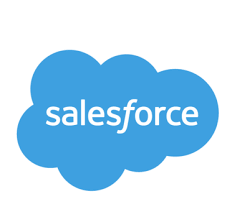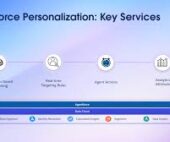Salesforce Campaigns Unleased. Salesforce Campaigns serve as a vital tool for marketers within Salesforce, acting as a central hub for managing campaign recipients, engagement, budget, and ROI. While they might initially appear straightforward, deeper exploration reveals their intricate connections within your Salesforce ecosystem.
Harnessing Salesforce Campaigns to their full potential is key, yet many users only scratch the surface. This insight, derived from our experience as Salesforce/Pardot Consultants, are shaped by pivotal moments like the introduction of Connected Campaigns. This transition elevated Salesforce Campaigns to a source of truth, rendering basic “first-touch” Pardot campaigns obsolete and aligning both systems for “Pardot” and “multi-touch attribution” to be spoken in the same breath.
Here’s a distilled guide packed with best practices to empower your utilization of Salesforce Campaigns for improved tracking and reporting.
Salesforce Campaigns Unleased
- Versatile Standard Object Salesforce Campaigns are a fundamental, universal Salesforce object present in every Sales Cloud instance. While primarily leveraged by Marketing Teams, Sales Development teams also benefit. Campaigns are ideal for tracking ROI, serving as a rule of thumb for initiatives tied to budget expenditure.
- The ‘Active’ Checkbox The ‘Active’ checkbox on Salesforce Campaigns is often overlooked. This field governs a campaign’s ‘influence’ on associated opportunity revenue. Inactive campaigns prevent new Leads/Contacts from joining, ensuring accuracy in Campaign Influence reports.
- Custom Campaign Fields Campaigns come with predefined fields, but adding custom fields can enhance data capture and report filtering without clutter. For instance, adding a ‘Target Industry’ field simplifies filtering reports without bloating the Campaign Name.
- Campaign Hierarchies Organize campaigns hierarchically to map out complex marketing initiatives. Parent campaigns can be associated with child campaigns, enabling aggregated metrics at the parent level.
- Campaign ‘In Hierarchy’ Fields Utilize standard ‘roll-up summary’ fields to consolidate metrics from child campaigns under parent campaigns. This simplifies reporting and analysis across nested campaign structures.
- Tailored Campaign Hierarchy View Customize campaign hierarchy views to navigate complex structures efficiently. Collapsible sections streamline navigation, ensuring relevance in large hierarchies.
- Connected Campaigns Leverage Connected Campaigns to sync Salesforce Campaigns with Pardot, enabling streamlined multi-touch attribution and campaign management from Salesforce.
- Engagement History Metrics Incorporate Engagement Metrics components into Campaign Lightning record pages to visualize Pardot campaign performance directly within Salesforce.
- Campaign Member Management Understand Campaign Members’ significance in consolidating Lead and Contact interactions within campaigns, offering a holistic view for reporting and analysis.
- Campaign Influence and Attribution Models Employ Campaign Influence to track ROI, attributing revenue to specific campaigns using default or custom attribution models.
- Comprehensive Campaign Reporting Explore standard and custom report types to extract nuanced insights from campaign data, including Pardot assets and activities.
- Collaboration and Approval Use Chatter for seamless collaboration on campaign records, and implement approval processes for rigorous campaign oversight.
- Record Types and Deep Cloning Employ record types for tailored campaign management and leverage deep cloning to duplicate campaigns with related records for repeat engagements.
Unleash the full potential of Salesforce Campaigns with these insights, transforming them into a strategic powerhouse for your marketing endeavors.













